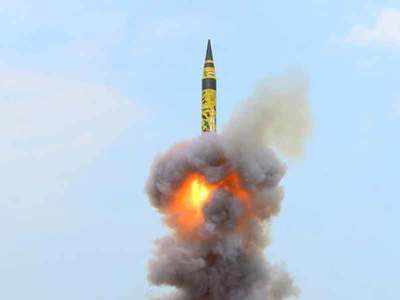 Pakistan remains ahead in nuclear warheads but India confident of its deterrence capability | India News
Pakistan remains ahead in nuclear warheads but India confident of its deterrence capability | India News
Rajat Pandit
NEW DELHI:
Pakistan may continue to remain slightly ahead of India in terms of the number ofnuclear warheads, with China having double the quantity, but the Indian defence establishment believes its deterrence capability is "robust", designed to ensure "survivability" for retaliatory strikes and firmly on track for further modernization.Pakistan now has 140-150 nuclear warheads as compared to 130-140 of India, with China hovering around 280, as per the latest assessment of the Stockholm International Peace Research Institute (SIPRI), which was released on Monday.The US and Russia are in a different league altogether with 6,450 and 6,850 nuclear warheads respectively, together accounting for 92 per cent of the 14,465 nuclear weapons around the globe. Arsenals of the other seven nuclear-armed countries are considerably smaller, but all are either developing or deploying new nuclear weapon systems.
"India and Pakistan are both expanding their nuclear weapon stockpiles as well as developing new land, sea and air-based missile delivery systems. China continues to modernize its nuclear weapon delivery systems and is slowly increasing the size of its nuclear arsenal," said SIPRI.
Defence establishment sources here say India, confronted with the collusive threat from China and Pakistan, has no other option but to systematically build nuclear deterrence that is "credible" and capable of inflicting massive damage in a retaliatory strike to any first strike by an adversary.

Pakistan, of course, has deliberately kept its nuclear policy ambiguous to deter India from undertaking any conventional military action despite repeated provocations, even as it fast supplements its enriched uranium-based nuclear programme with a weapons-grade plutonium one through the four heavy water reactors at the Khushab nuclear complex with help from China.
Islamabad also often brandishes its 70-km range Nasr (Hatf-IX) nuclear missiles as an effective battlefield counter to India's "Cold Start" strategy of swift, high-voltage conventional strikes into enemy territory. "For India, nuclear weapons are not war-fighting weapons. But we need credible minimum deterrence, with the certainty of massive retaliation against adversaries," said the source.
China, with its rapid military modernization and expanding nuclear and missile arsenals, of course remains a major worry. Towards this end, it's estimated that India, which has a largely plutonium-based nuclear weapons programme, would like to achieve a stockpile of around 200 warheads in the decade ahead.
But the continuing lack of an adequate number of nuclear-powered submarines armed with long-range nuclear-tipped missiles, which can silently stay underwater for extended periods, needs to be plugged to achieve a credible nuclear weapons triad. "Projects are underway to achieve this," said the source.
No comments:
Post a Comment